First-Party
Data Is Your Future
Prepare now for the next
10 years of customer experience

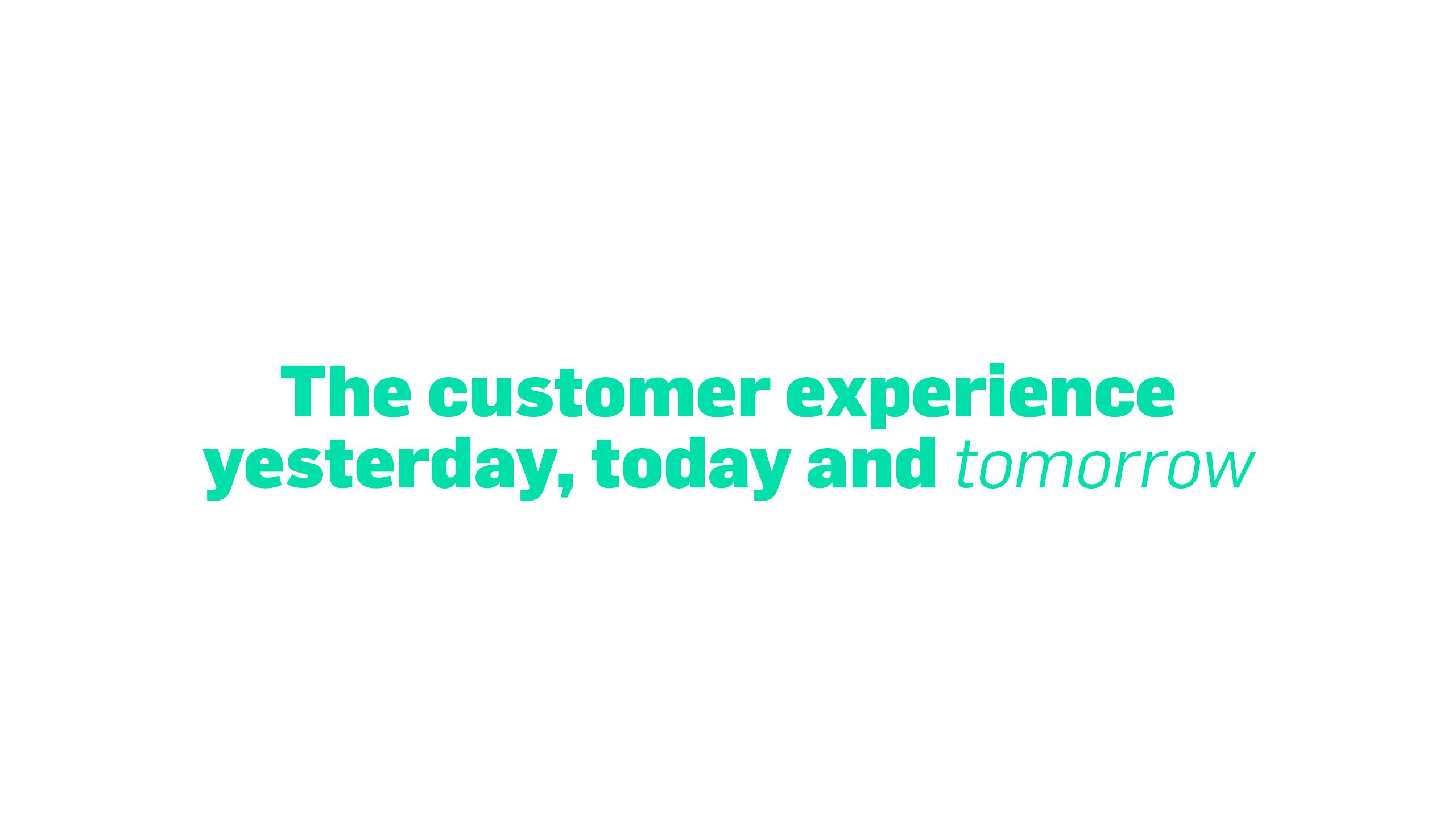
In theory, delivering a superior customer experience seems simple: Find a way to delight people by making sure everything you do anticipates or fulfills a need that they have. Of course, taking this kind of seamless, frictionless, personalized approach is much harder in practice. Success in customer centricity requires a deep and powerful understanding of each person’s individual wants and needs. And that will rest on how well you can earn, organize and apply first-party data.
If you heard this a few years ago, you might have rolled your eyes. Why focus on first-party data when third-party data is so readily available to target (and endlessly retarget) people programmatically? What might have been thought of then as a personalized experience quickly became a constant barrage of targeted ads. People were turned off as marketers and advertisers failed to put the customer first and kept them mostly in the dark about how and why their data was being collected. The result? Greater data regulation, an increasing desire for consumer privacy and an end to tools like third-party cookies.
You can see the conundrum: People want brands to know them, understand them and fulfill their needs, but they’re wary of sharing their data to get it.
Two statistics illustrate the complexity of the situation. A Harris Poll survey for Redpoint Global found that 63% of consumers expect personalization as a standard of service. But 83% of consumers surveyed by Salesforce said that they are concerned about sharing personal data online, and 72% said they would stop buying from a company or using a service because of privacy concerns.
Reconciling these competing desires comes down to building a direct and trusted relationship with your customers. To deliver the high-quality and personalized experiences consumers want, you need to create a value exchange where they feel secure in sharing their personal information. Once you have this, you can move on to understanding and applying their data to deliver the experiences they want.
Certainly, the coming deprecation of third-party cookies by Google is a critical factor in the move to first-party data. And while the cookie’s expected 2022 death has been given a year’s reprieve, that shouldn’t be a reason to delay your move to a first-party data strategy. Simply put, the tools and identifiers that have driven programmatic are on their way out, and no company can afford to delay their transition away from these tactics.
While it’s impossible to predict exactly what consumers will want five and 10 years from now, it’s certain you’ll need insights into their wants and needs to deliver it. That rests on how well you can build first-party relationships that will drive your first-party data strategy.
To do this, you’ll need a clear understanding of the journey a piece of customer data goes through from when the record itself is established to when it becomes part of a rich identity graph that can serve as the foundation of delivering that rich, satisfying and delightful customer experience. Read on for insights on the key steps you need to take to make first-party data a competitive advantage.

In theory, delivering a superior customer experience seems simple: Find a way to delight people by making sure everything you do anticipates or fulfills a need that they have. Of course, taking this kind of seamless, frictionless, personalized approach is much harder in practice. Success in customer centricity requires a deep and powerful understanding of each person’s individual wants and needs. And that will rest on how well you can earn, organize and apply first-party data.
If you heard this a few years ago, you might have rolled your eyes. Why focus on first-party data when third-party data is so readily available to target (and endlessly retarget) people programmatically? What might have been thought of then as a personalized experience quickly became a constant barrage of targeted ads. People were turned off as marketers and advertisers failed to put the customer first and kept them mostly in the dark about how and why their data was being collected. The result? Greater data regulation, an increasing desire for consumer privacy and an end to tools like third-party cookies.
You can see the conundrum: People want brands to know them, understand them and fulfill their needs, but they’re wary of sharing their data to get it.
Two statistics illustrate the complexity of the situation. A Harris Poll survey for Redpoint Global found that 63% of consumers expect personalization as a standard of service. But 83% of consumers surveyed by Salesforce said that they are concerned about sharing personal data online, and 72% said they would stop buying from a company or using a service because of privacy concerns.
Reconciling these competing desires comes down to building a direct and trusted relationship with your customers. To deliver the high-quality and personalized experiences consumers want, you need to create a value exchange where they feel secure in sharing their personal information. Once you have this, you can move on to understanding and applying their data to deliver the experiences they want.
Certainly, the coming deprecation of third-party cookies by Google is a critical factor in the move to first-party data. And while the cookie’s expected 2022 death has been given a year’s reprieve, that shouldn’t be a reason to delay your move to a first-party data strategy. Simply put, the tools and identifiers that have driven programmatic are on their way out, and no company can afford to delay their transition away from these tactics.
While it’s impossible to predict exactly what consumers will want five and 10 years from now, it’s certain you’ll need insights into their wants and needs to deliver it. That rests on how well you can build first-party relationships that will drive your first-party data strategy.
To do this, you’ll need a clear understanding of the journey a piece of customer data goes through from when the record itself is established to when it becomes part of a rich identity graph that can serve as the foundation of delivering that rich, satisfying and delightful customer experience. Read on for insights on the key steps you need to take to make first-party data a competitive advantage.

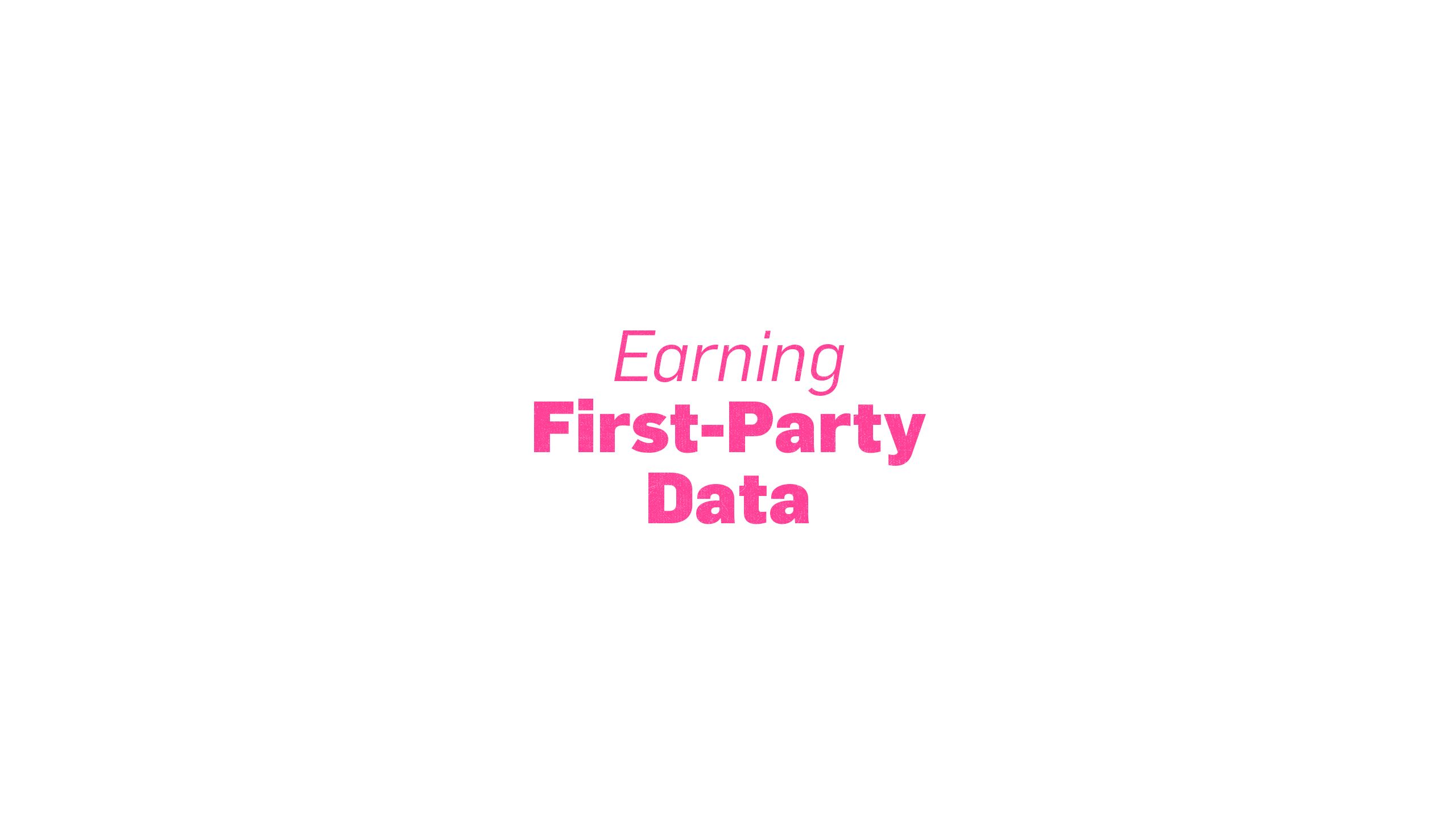
Building an ongoing first-party relationship through great experiences eventually leads to customers offering their data in an exchange, which forms the foundation of a successful first-party data strategy.
That seems simple enough, but for many organizations, this can be a significant challenge. To begin with, there are many companies (think CPG) that have never had a direct relationship with their actual customers. But in today's world, they need to begin to create some kind of first-party relationship. Others have information about their customers via their CRM systems or other platforms, but this data often comes from sales and is collected without a clear strategy in mind.
The key to earning data is to establish a clear and fair value exchange—a give and take in which you give your customer something in return for the information you seek. What data you do and don’t collect and how you earn it will be the jumping-off point for the rest of your first-party strategy.
So, where to begin? Start with a data audit. Assess what data you already have and more importantly, why you are collecting it. Earning useful data is a continuous process that has the ongoing goal of discovering what the customer wants from you. That could mean analyzing product browsing patterns, bookmarking, wish lists, and other touchpoints to discover future intent and better understand customer journeys. The idea isn’t just to collect individual data points and move on, but to weave them into relationship-building and the constant development of insights for an even better future experience.
Fast forward a few years. The amount of data being generated by your customers and prospects is only going to increase exponentially. But more data doesn’t mean more value. In fact, more data, in many cases, can be a liability, increasing your need for more storage, more governance and more organization, throwing your CX efforts out of whack. For your strategy to be sustainable, you need to stay focused on only collecting the data that really matters—data that allows you to serve the customer better. Starting that practice now will set you up for success down the line.




Building an ongoing first-party relationship through great experiences eventually leads to customers offering their data in an exchange, which forms the foundation of a successful first-party data strategy.
That seems simple enough, but for many organizations, this can be a significant challenge. To begin with, there are many companies (think CPG) that have never had a direct relationship with their actual customers. But in today's world, they need to begin to create some kind of first-party relationship. Others have information about their customers via their CRM systems or other platforms, but this data often comes from sales and is collected without a clear strategy in mind.
The key to earning data is to establish a clear and fair value exchange—a give and take in which you give your customer something in return for the information you seek. What data you do and don’t collect and how you earn it will be the jumping-off point for the rest of your first-party strategy.
So, where to begin? Start with a data audit. Assess what data you already have and more importantly, why you are collecting it. Earning useful data is a continuous process that has the ongoing goal of discovering what the customer wants from you. That could mean analyzing product browsing patterns, bookmarking, wishlists, and other touchpoints to discover future intent and better understand customer journeys to purchase. The idea isn’t just to collect individual data points and move on, but to weave them into relationship-building and the constant development of insights for an even better future experience.
Fast forward a few years. The amount of data being generated by your customers and prospects is only going to increase exponentially. But more data doesn’t mean more value. In fact, more data, in many cases, can be a liability, increasing your need for more storage, more governance and more organization, throwing your CX efforts out of whack. For your strategy to be sustainable, you need to stay focused on only collecting the data that really matters—data that allows you to serve the customer better. Starting that practice now will set you up for success down the line.

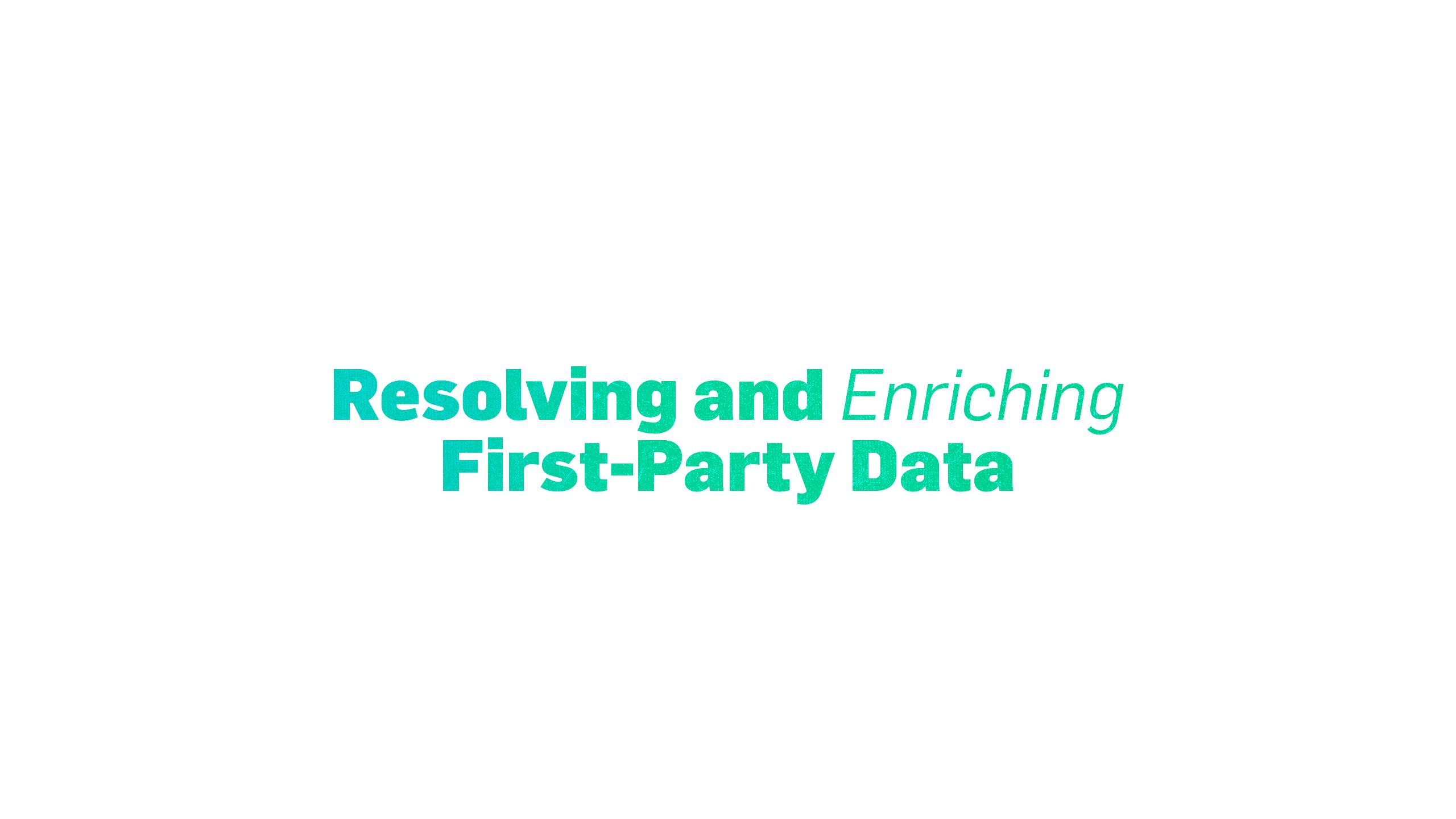
Your first-party strategy starts with what you know about your customers from the information you’ve earned directly from them. From there, the data needs to be unified and cleansed. Then it should be connected to data from other sources and built out, so you get a richer picture of who your customers are and what they want and need.
This forms the basis of your identity infrastructure. It’s a full graph or picture that holds everything you know about the customer, and it’s all created and managed in a privacy-compliant way that respects the customer and ensures they have control over what gets shared and used.
You’ve probably heard the term identity tossed around a lot, but what does it really mean? It’s the process of integrating everything you know about the customer from what devices they use, their transactions, their offline behavior, contextual information, etc., into a unique customer profile. These profiles allow you to effectively personalize and create the experiences your customers want. Don’t think of identity as one static thing, but as a number of contextual linkages that come together to unlock different marketing and analytic activities.
Today’s identity infrastructure is nothing if not complex. Consumers are increasingly wary of sharing their data—only 11% of people opted in to be tracked on their phones when Apple gave them the option. The loss of third-party cookies, an increase in regulatory compliance and the ever-vast amounts of data being generated make getting that connected view of the customer that much more challenging.
But working through these challenges is more than worth it. Having that accurate connected view of the customer will ensure you send the exact right message at the exact right time and prevent against redundant or irrelevant messaging.
Take, for example, a customer named Cathy who may have multiple ways of engaging with your brand—a website log-in through her personal email address, a loyalty program linked to her mobile number, a rewards program from a branded credit card, and a separate log in for a delivery service she now uses to have someone shop for and deliver your product. Having an identity infrastructure can resolve these multiple accounts into a unified view. This will prevent you from doing CX-killing things, like retargeting her for a product she’s already bought or continuously inviting her to a loyalty program she’s already in.
Now you need to start to enrich what you know about Cathy, and that doesn’t necessarily come from her activity with you. Enrichment is the process of bringing together your first-party information about Cathy with data from trusted partners and anonymous inputs like exposure logs, CTV IDs and site analytics.
When working with partners that supply anonymous inputs or other extra data or connectors, it’s crucial you consider first and foremost, their privacy standards and second, how flexible and interoperable they are. Any partner you work with should be able to work within the systems you already have, as well as meet and exceed your standards for keeping your first-party customer data secure. If they don’t meet these standards, walk away. The trusting, direct relationship that underlies all aspects of your identity infrastructure is not worth jeopardizing.
With a high-quality identity infrastructure in place, you’ll be positioned to provide the experiences your customer expects and most importantly, drive sales. The benefits of a solid identity infrastructure go beyond marketing. You can make operational decisions about how many products to manufacture, forecast revenue, brainstorm new products and even find new markets.
As the identity landscape evolves and the consumer experience continues to fragment, brands need a new approach to their data strategy. Now is the time for brands to turn these changes into opportunities by bringing data into a connected view, utilizing partner systems to expand that view and finally, activating the data to improve the experience all while staying privacy-compliant and maintaining trust.




Your first-party strategy starts with what you know about your customers from the information you’ve earned directly from them. From there, the data needs to be unified and cleansed. Then it should be connected to data from other sources and built out, so you get a richer picture of who your customers are and what they want and need.
This forms the basis of your identity infrastructure. It’s a full graph or picture that holds everything you know about the customer, and it’s all created and managed in a privacy-compliant way that respects the customer and ensures they have control over what gets shared and used.
You’ve probably heard the term identity tossed around a lot, but what does it really mean? It’s the process of integrating everything you know about the customer from what devices they use, their transactions, their offline behavior, contextual information, etc., into a unique customer profile. These profiles allow you to effectively personalize and create the experiences your customers want. Don’t think of identity as one static thing, but as a number of contextual linkages that come together to unlock different marketing and analytic activities.
Today’s identity infrastructure is nothing if not complex. Consumers are increasingly wary of sharing their data—only 11% of people opted in to be tracked on their phones when Apple gave them the option. The loss of third-party cookies, an increase in regulatory compliance and the ever-vast amounts of data being generated make getting that connected view of the customer that much more challenging.
But working through these challenges is more than worth it. Having that accurate connected view of the customer will ensure you send the exact right message at the exact right time and prevent against redundant or irrelevant messaging.
Take, for example, a customer named Cathy who may have multiple ways of engaging with your brand—a website log-in through her personal email address, a loyalty program linked to her mobile number, a rewards program from a branded credit card, and a separate log in for a delivery service she now uses to have someone shop for and deliver your product. Having an identity infrastructure can resolve these multiple accounts into a unified view. This will prevent you from doing CX-killing things, like retargeting her for a product she’s already bought or continuously inviting her to a loyalty program she’s already in.
Now you need to start to enrich what you know about Cathy, and that doesn’t necessarily come from her activity with you. Enrichment is the process of bringing together your first-party information about Cathy with data from trusted partners and anonymous inputs like exposure logs, CTV IDs and site analytics.
When working with partners that supply anonymous inputs or other extra data or connectors, it’s crucial you consider first and foremost, their privacy standards and second, how flexible and interoperable they are. Any partner you work with should be able to work within the systems you already have, as well as meet and exceed your standards for keeping your first-party customer data secure. If they don’t meet these standards, walk away. The trusting, direct relationship that underlies all aspects of your identity infrastructure is not worth jeopardizing.
With a high-quality identity infrastructure in place, you’ll be positioned to provide the experiences your customer expects and most importantly, drive sales. The benefits of a solid identity infrastructure go beyond marketing. You can make operational decisions about how many products to manufacture, forecast revenue, brainstorm new products and even find new markets.
As the identity landscape evolves and the consumer experience continues to fragment, brands need a new approach to their data strategy. Now is the time for brands to turn these changes into opportunities by bringing data into a connected view, utilizing partner systems to expand that view and finally, activating the data to improve the experience all while staying privacy-compliant and maintaining trust.
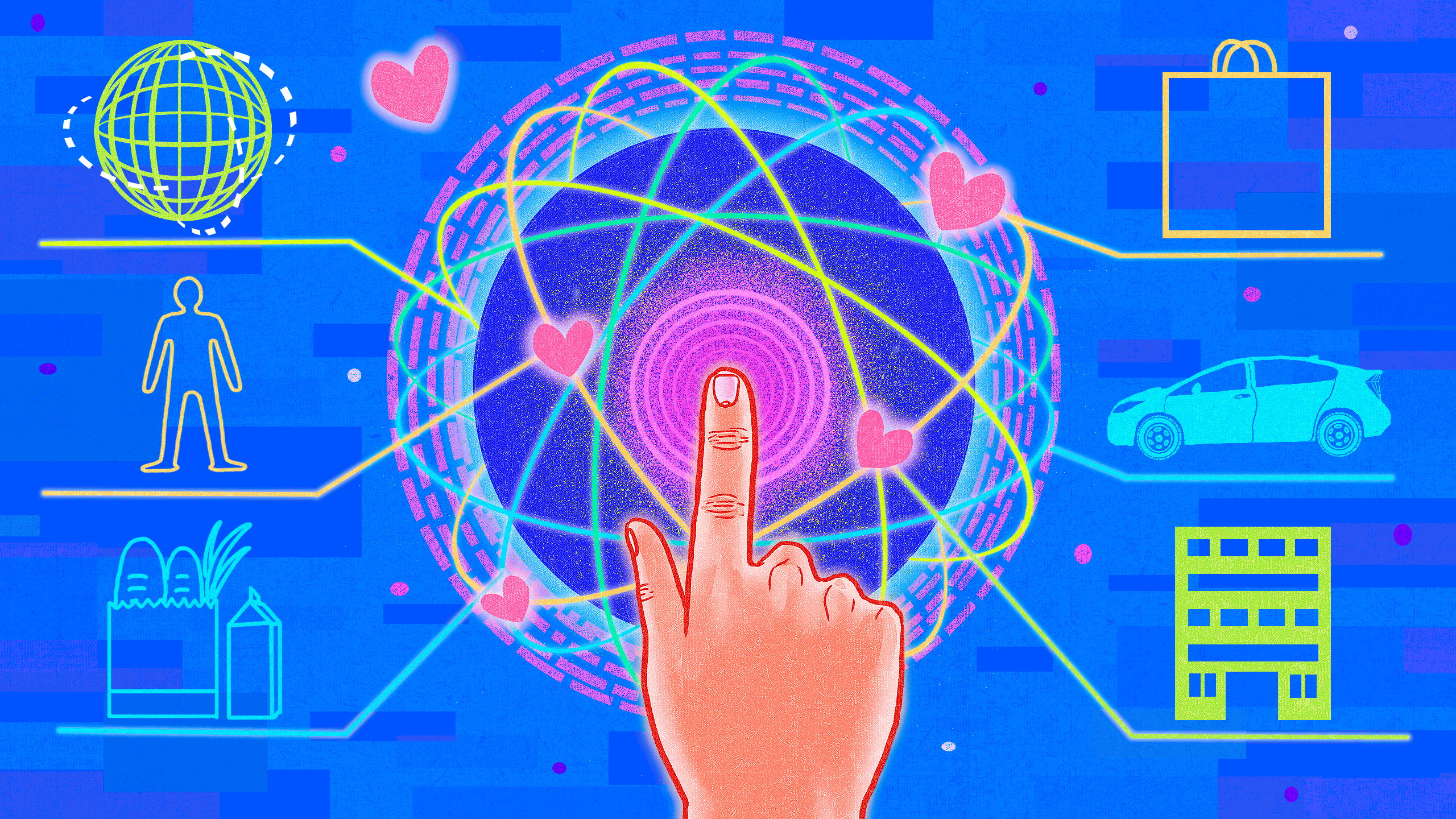

With your first-party data cleaned, resolved, enriched and organized, you can now apply it to impact the customer journey with activation. This means taking everything you know about your customer and using it to precisely deliver what the customer wants in the moment they want it. From sending relevant product recommendations to keeping them engaged in your loyalty program to optimizing their conversations with customer support, activating your data is all about using what you know about the customer to make their lives easier and better.
This will look different for every brand and be dependent on what resources you have available. You won’t want to activate on every piece of data just because you can. Those that are most successful take a test-and-learn approach and use their data to determine where to personalize and what areas of the experience to optimize. They start with a specific business case and test and measure to prove the value of what they are doing before expanding elsewhere.
With this in mind, what are some of the areas of opportunity?
The first stage can cover things you’ve likely been working towards for years: accurate and relevant personalization in email campaigns, ads and other communications, diversifying to newer channels like CTV and cookieless display, and reducing waste by suppressing ads to existing customers.
The second stage is where the real value emerges—for both your customers and for your ability to constantly improve the experiences you're providing. With that connected view of the customer, you’ll be able to have 1:1 conversations, where the content you deliver is personalized to the unique needs of your customer and the journey they are on.
And as you create these conversations, you’ll also start to learn more about what your customer wants and needs. That data goes back into your first-party data efforts and adds greater depth and nuance to the identity graph. The customer knowledge you have builds and builds on itself to enhance and augment your relationship with that customer over time. With each interaction, you’re building a stronger and more trusting relationship.
Which, of course, makes the experience you’re providing even more delightful and satisfying.
For example, a global hotel chain might have a segment of customers who chose to honeymoon at one of their resorts. During the stay, you might learn their meal preferences, the rooms they like or which activities they booked. Nine months later, when a honeymooner starts researching other resorts on your website, it might be possible to infer they are looking for an anniversary trip and you can deliver a personalized email with a special deal and content around perfect anniversary itineraries. By leveraging your first-party data, you’ve provided them with an excellent experience and built on your relationship. Once they book, you’ll be able to feed their travel dates and any other new data back into your systems and generate that feedback loop.




With your first-party data cleaned, resolved, enriched and organized, you can now apply it to impact the customer journey with activation. This means taking everything you know about your customer and using it to precisely deliver what the customer wants in the moment they want it. From sending relevant product recommendations to keeping them engaged in your loyalty program to optimizing their conversations with customer support, activating your data is all about using what you know about the customer to make their lives easier and better.
This will look different for every brand and be dependent on what resources you have available. You won’t want to activate on every piece of data just because you can. Those that are most successful take a test-and-learn approach and use their data to determine where to personalize and what areas of the experience to optimize. They start with a specific business case and test and measure to prove the value of what they are doing before expanding elsewhere.
With this in mind, what are some of the areas of opportunity?
The first stage can cover things you’ve likely been working towards for years: accurate and relevant personalization in email campaigns, ads and other communications, diversifying to newer channels like CTV and cookieless display, and reducing waste by suppressing ads to existing customers.
The second stage is where the real value emerges—for both your customers and for your ability to constantly improve the experiences you're providing. With that connected view of the customer, you’ll be able to have 1:1 conversations, where the content you deliver is personalized to the unique needs of your customer and the journey they are on.
And as you create these conversations, you’ll also start to learn more about what your customer wants and needs. That data goes back into your first-party data efforts and adds greater depth and nuance to the identity graph. The customer knowledge you have builds and builds on itself to enhance and augment your relationship with that customer over time. With each interaction, you’re building a stronger and more trusting relationship.
Which, of course, makes the experience you’re providing even more delightful and satisfying.
For example, a global hotel chain might have a segment of customers who chose to honeymoon at one of their resorts. During the stay, you might learn their meal preferences, the rooms they like or which activities they booked. Nine months later, when a honeymooner starts researching other resorts on your website, it might be possible to infer they are looking for an anniversary trip and you can deliver a personalized email with a special deal and content around perfect anniversary itineraries. By leveraging your first-party data, you’ve provided them with an excellent experience and built on your relationship. Once they book, you’ll be able to feed their travel dates and any other new data back into your systems and generate that feedback loop.
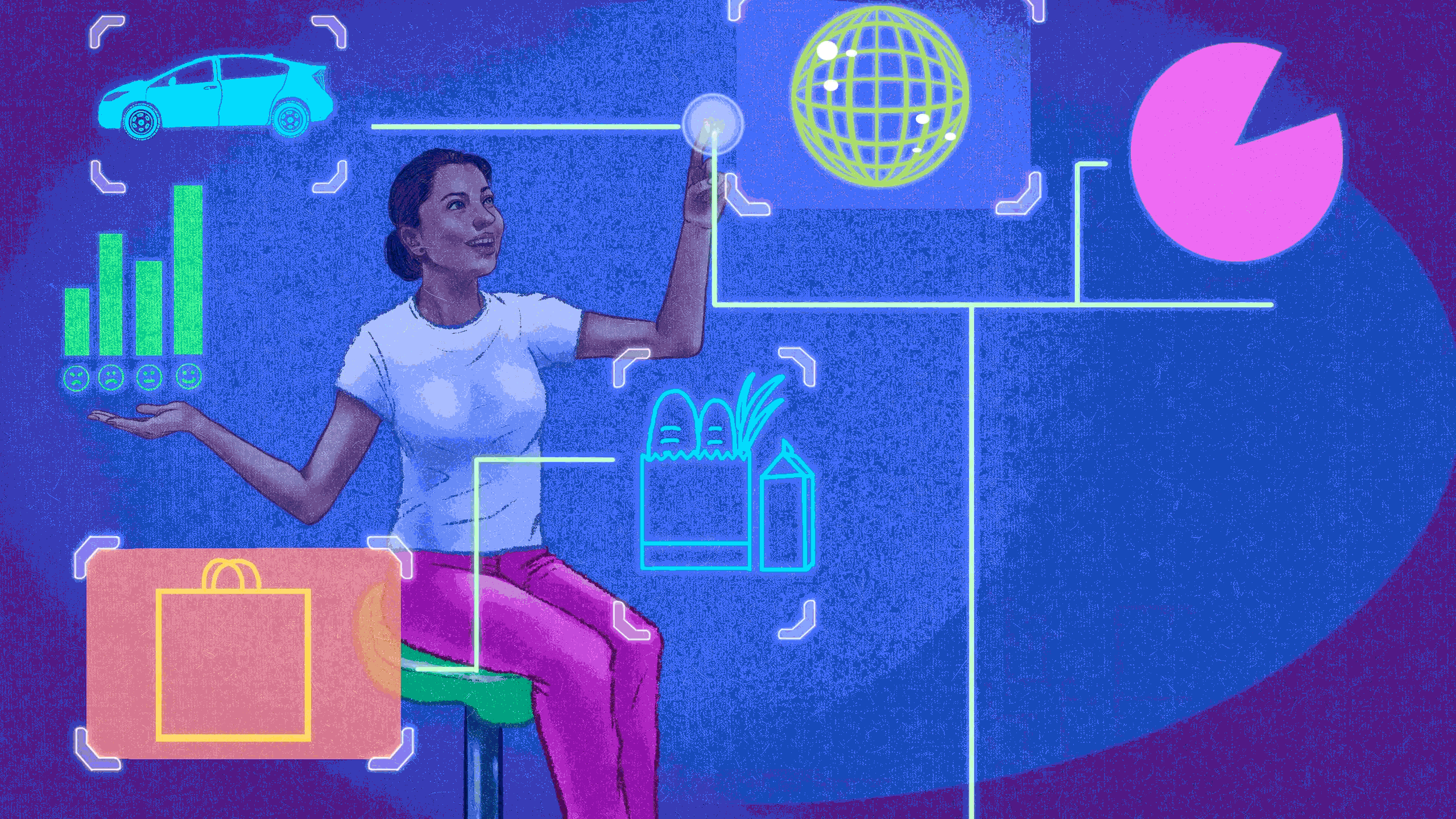

There’s no way to know for certain how what customers want from brands will change in years to come, but there are a few things you can plan for. First, the third-party cookie will go away. While that timeline has been pushed back, it’s no excuse not to get started now.
Consumers’ attitudes towards data collection and regulations associated with those sentiments will also continue to escalate. Now is your time to make sure you are on the right side of the issue. Developing relationships built on trust and acting ethically to maintain it is the only path forward.
Customer behavior will also continue to fragment across devices, platforms and channels, and in the process, more data will be created by sources, types and volumes. To navigate this deluge, stay focused on your specific goals and try not to do too much too fast.
All these shifts have a common solution. That is, developing trusted, direct relationships that are rooted in a true value exchange. If you can keep this central to everything you do, you will succeed no matter how the industry changes.
Now that you understand what a first-party strategy looks like and why It matters to your customer experience, where should you start? The checklist below contains the action items that will put you on the track to first-party success and better customer experiences now and in the future.


There’s no way to know for certain how what customers want from brands will change in years to come, but there are a few things you can plan for. First, the third-party cookie will go away. While that timeline has been pushed back, it’s no excuse not to get started now.
Consumers’ attitudes towards data collection and regulations associated with those sentiments will also continue to escalate. Now is your time to make sure you are on the right side of the issue. Developing relationships built on trust and acting ethically to maintain it is the only path forward.
Customer behavior will also continue to fragment across devices, platforms and channels, and in the process, more data will be created by sources, types and volumes. To navigate this deluge, stay focused on your specific goals and try not to do too much too fast.
All these shifts have a common solution. That is, developing trusted, direct relationships that are rooted in a true value exchange. If you can keep this central to everything you do, you will succeed no matter how the industry changes.
Now that you understand what a first-party strategy looks like and why It matters to your customer experience, where should you start? The checklist below contains the action items that will put you on the track to first-party success and better customer experiences now and in the future.
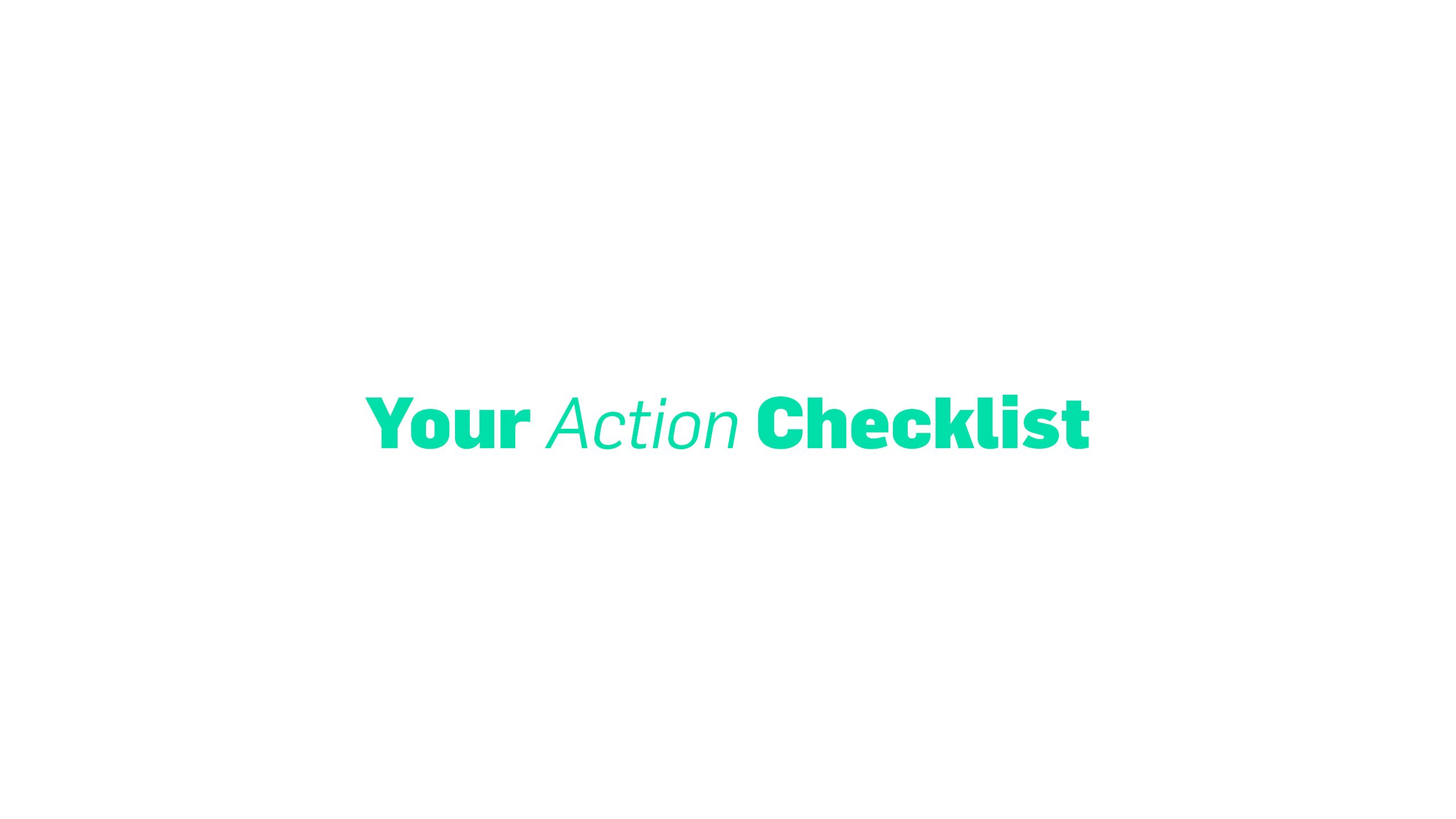
About LiveRamp
LiveRamp is the leading data connectivity platform for the safe and effective use of data. Powered by core identity capabilities and an unparalleled network, LiveRamp enables companies and their partners to better connect, control, and activate data to transform customer experiences and generate more valuable business outcomes. LiveRamp’s fully interoperable and neutral infrastructure delivers end-to-end addressability for the world’s top brands, agencies, and publishers. For more information, visit www.LiveRamp.com.
Illustrations by Yu-Ming Huang



 Built with Shorthand
Built with Shorthand





